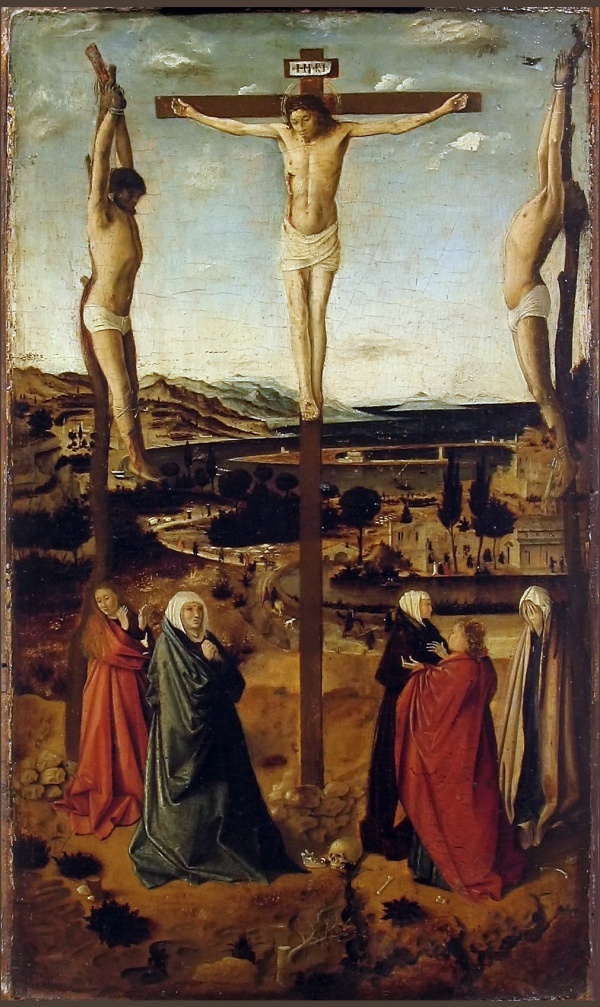Facts About Crucifixion (Antonello da Messina)
Antonello da Messina, a celebrated Italian Renaissance artist, produced three distinct versions of the Crucifixion. The first was completed around 1454/1455, while the second and third were finished in 1475. These masterpieces can be admired in three different museums: the Brukenthal National Museum, the Royal Museum of Fine Arts Antwerp, and the National Gallery.
The painting known as the Sibiu Crucifixion, an early work influenced by the Flemish style, was once mistakenly attributed to an unknown 14th-century German artist. In the background, there is a symbolic view of Messina, potentially representing Jerusalem as requested by the anonymous patron.
In the Antwerp Crucifixion, Christ is depicted between two criminals, with Mary and John the Evangelist seated below. The lower part of the painting showcases a Flemish-style landscape, while the upper part, featuring the arrangement of the crosses, demonstrates a sophisticated understanding of perspective influenced by Italian art. Art historian Roberto Longhi suggested that the upper section may have been added later. The painting is signed and dated by the artist in 1475.
The London Crucifixion stands out as one of the few paintings signed and dated by Antonello da Messina. The composition is divided by the cross and a lake in the background, with the Virgin Mary on the left and St. John on the right. The inscription "1475/antonellus messaneus/me pinxit" reveals the year and the artist's name, marking it as a significant work from his later period.

 Bulgaria
Bulgaria